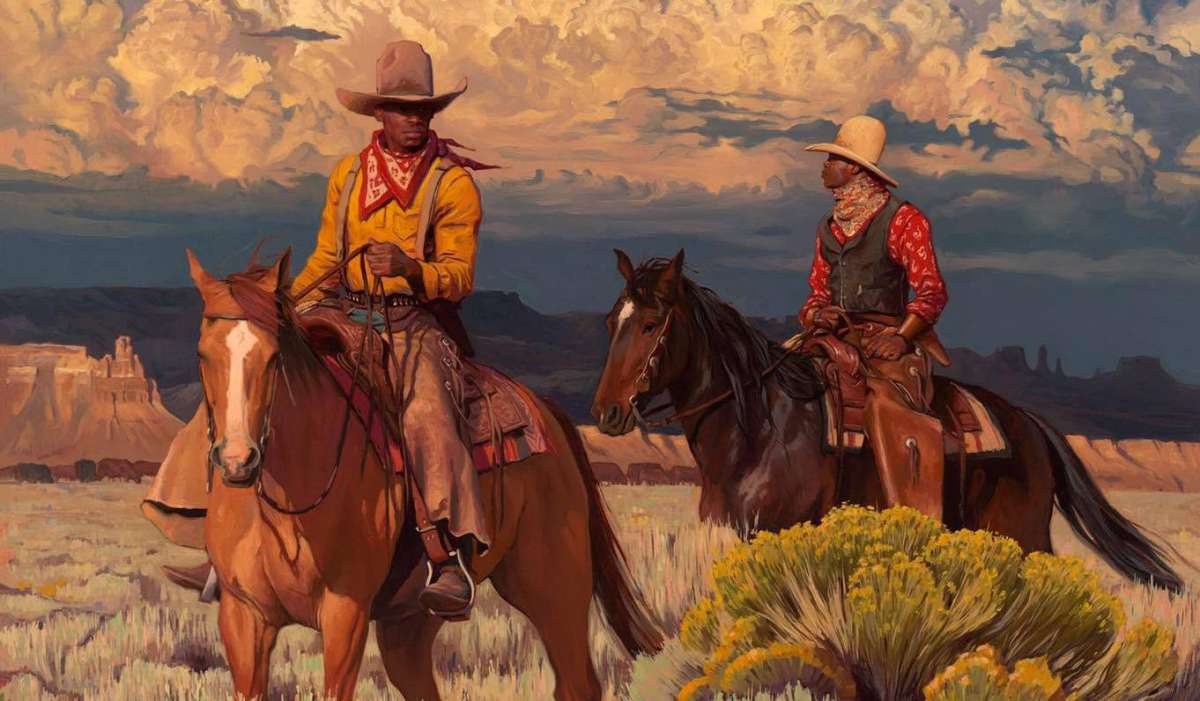The Subtleties of American Western Art
How to be anti-colonial in painting and appreciating western art

I’ve always loved American Western Art for its wide vistas and sweeping plains, but I’ve also felt conflicted about appreciating a style of art that often captures the scenes of western colonization. Western art is so expansive as an art movement that it’s probably unfair to indict it categorically; better, perhaps, to examine the merits of specific pieces: how does a specific painting portray life in the American west? What and whom does it center? What stories does this painting tell and how do those comport with the meta-narrative of colonization? Recently, I’ve been deeply taken by the contemporary painter Mark Maggiori. Mark is originally from France, but resides in New Mexico and paints stunning pieces that subtly challenge western art meta-narratives in two ways: 1) his paintings often profile Native women and Black cowboys as subjects (like this one), and 2) he manifests extraordinary cloudscapes that draw the eye away from the painting’s subject, instead centering the grandness of the sky, and, in turn, the relative smallness of the humans (like this one). The clouds loom over his unwitting subjects with an ominous power that leads one to wonder who will conquer who. When asked how long it took to paint one of his paintings, he once said: “it has taken me a lifetime.”
